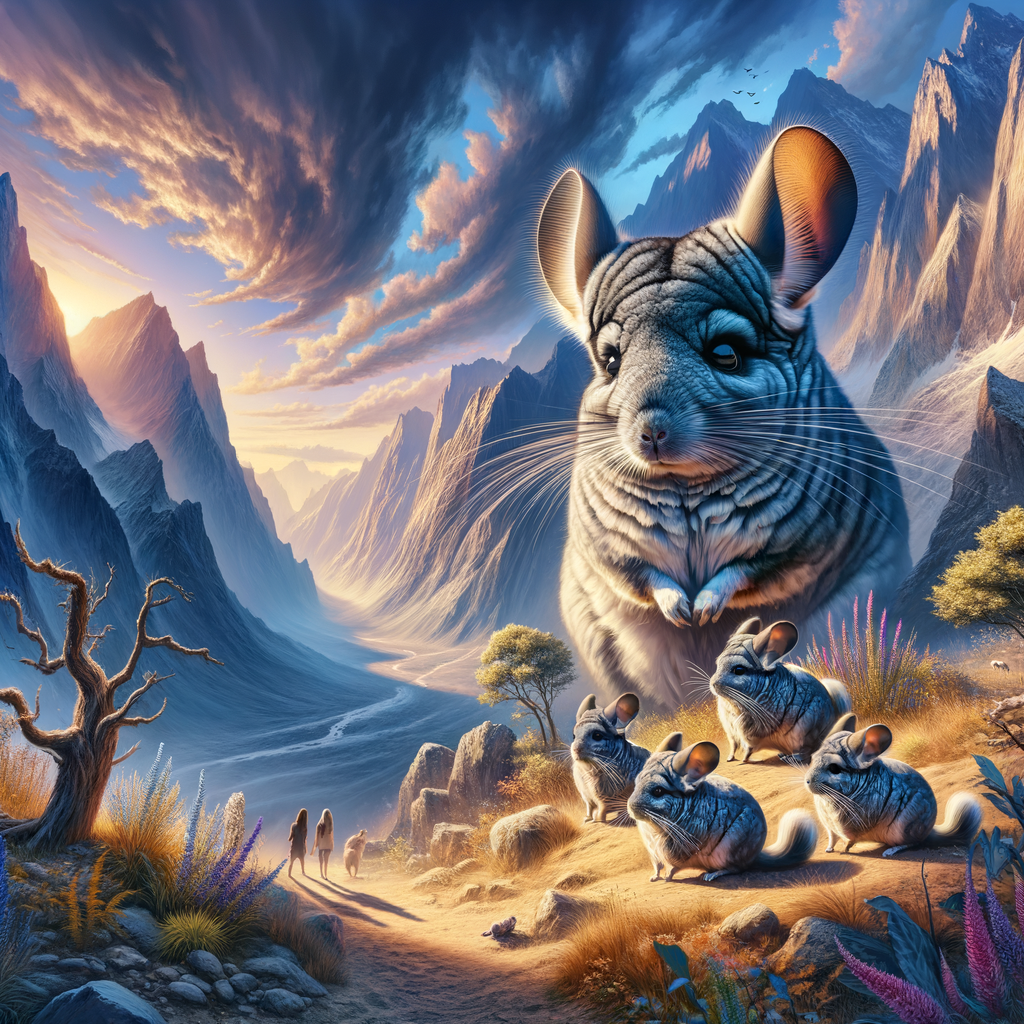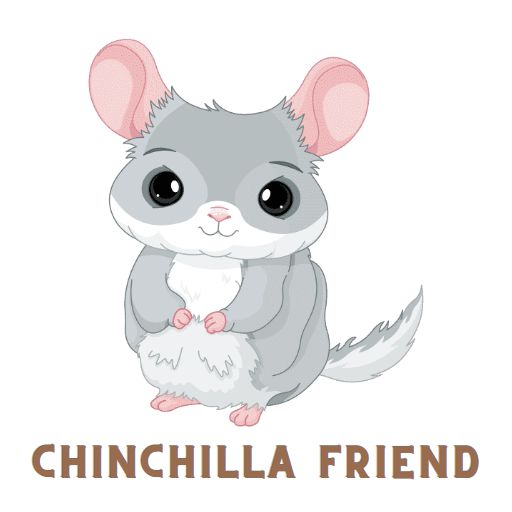
Introduction to Chinchilla Conservation
Chinchillas are fascinating creatures with soft fur and curious eyes. They are native to the Andes mountains in South America. However, their population has been on a steady decline over the past few decades. This is where the concept of Chinchilla conservation comes in. Let’s delve into understanding the importance of this and get an overview of the endangered Chinchilla species.
- Understanding the Importance of Chinchilla Conservation
- Overview of Endangered Chinchilla Species
Chinchilla conservation is crucial for several reasons. Firstly, Chinchillas play an essential role in the ecosystem. They are a food source for predators and help control the population of insects and plants by feeding on them. Secondly, their decline is a sign of larger environmental issues, such as habitat loss and climate change. By conserving Chinchillas, we are also addressing these broader environmental challenges.
There are two species of Chinchillas that are currently endangered: the Long-tailed Chinchilla and the Short-tailed Chinchilla. The Long-tailed Chinchilla is considered critically endangered, with an estimated population of less than 10,000 in the wild. The Short-tailed Chinchilla, on the other hand, is considered vulnerable, with a slightly larger population. Both species are threatened by habitat loss due to mining and agriculture, as well as illegal hunting for their fur.
In conclusion, Chinchilla conservation is not just about saving these adorable creatures. It’s about preserving the balance of our ecosystem and addressing larger environmental issues. By understanding the importance of Chinchilla conservation and the state of endangered Chinchilla species, we can take steps towards a more sustainable future.
The Current State of Chinchilla Conservation
Chinchillas, small rodents native to the Andes mountains in South America, are currently facing a number of challenges that threaten their survival. Let’s take a closer look at these challenges.
Challenges in Protecting Chinchillas
There are three main challenges that are making it difficult to protect chinchillas and ensure their survival for future generations.
- Loss of Natural Habitat
- Illegal Pet Trade
- Climate Change
Chinchillas are losing their homes due to human activities. People are cutting down trees and clearing land for farming and building, leaving chinchillas with nowhere to live. According to the International Union for Conservation of Nature, habitat loss is the biggest threat to chinchillas.
Chinchillas are popular pets because of their soft fur and cute appearance. Unfortunately, this has led to a rise in the illegal pet trade. People are capturing chinchillas from the wild and selling them as pets, which is causing a decrease in their population.
Changes in the climate are also affecting chinchillas. As the earth gets warmer, the plants that chinchillas eat are becoming less available. This is making it harder for them to find food and survive.
In conclusion, the current state of chinchilla conservation is a cause for concern. The loss of natural habitat, the illegal pet trade, and climate change are all posing significant threats to these adorable creatures. It’s important that we take action now to protect chinchillas and preserve their natural habitats.
Efforts in Chinchilla Protection
In the face of the challenges that threaten the survival of chinchillas, several measures are being taken to ensure their protection. These efforts are crucial in maintaining the balance of our ecosystem and preserving these unique creatures for future generations. Let’s delve into some of these efforts:
- Establishment of Protected Areas
- Breeding Programs
- Legislation Against Illegal Trade
One of the key steps taken to protect chinchillas is the creation of protected areas. These are special zones where chinchillas can live without the fear of habitat loss or human interference. For example, the Chinchilla National Reserve in Chile is a sanctuary dedicated solely to the protection of chinchillas. This reserve provides a safe haven where these animals can thrive in their natural habitat.
Breeding programs are another important effort in chinchilla conservation. These programs aim to increase the population of chinchillas by encouraging their reproduction in a controlled environment. Once the chinchillas are strong and healthy, they are reintroduced into the wild. This helps to boost their numbers and ensure the survival of the species.
Illegal trade is a major threat to chinchillas. To combat this, laws have been enacted to prohibit the illegal trade of chinchillas. These laws make it a crime to hunt, capture, or sell chinchillas without proper authorization. They serve as a deterrent and help to protect chinchillas from being exploited.
These efforts, while significant, are just the beginning. The protection of chinchillas requires ongoing commitment and action. By understanding and supporting these efforts, we can all play a part in ensuring the survival of these fascinating creatures.
Case Studies in Chinchilla Conservation
Let’s dive into some real-life examples of how conservation efforts are making a difference in the lives of chinchillas. We’ll start with the Furry Friends Conservation Project.
Furry Friends Conservation Project
The Furry Friends Conservation Project is a dedicated initiative aimed at protecting and preserving chinchilla populations. Let’s explore their goals, strategies, successes, challenges, and key takeaways.
- Project Goals and Strategies
- Successes and Challenges
- Key Takeaways for Future Efforts
The primary goal of the Furry Friends Conservation Project is to protect chinchillas from habitat loss and hunting. They aim to achieve this through public education, habitat restoration, and advocating for stricter hunting laws. The project also focuses on breeding programs to increase the chinchilla population.
The Furry Friends Conservation Project has seen significant success in increasing public awareness about the plight of chinchillas. They have also been successful in restoring several chinchilla habitats. However, they face challenges in the form of illegal hunting and difficulty in controlling habitat destruction.
The Furry Friends Conservation Project teaches us that public education is a powerful tool in conservation. It also highlights the importance of legal measures in protecting wildlife. Lastly, it underscores the need for ongoing efforts to restore and protect habitats, even in the face of challenges.
In conclusion, the Furry Friends Conservation Project is a shining example of how dedicated conservation efforts can make a significant difference in protecting and preserving chinchilla populations. Their work offers valuable insights for future conservation efforts.
Chinchilla Habitat Protection Initiative
The Chinchilla Habitat Protection Initiative is a remarkable case study in the field of wildlife conservation. This initiative has taken a unique approach to protect the habitats of Chinchillas, which has had a significant impact on their population. Let’s delve into the details of this initiative.
- Initiative’s approach to habitat protection
- Impact on Chinchilla populations
- Lessons learned
The Chinchilla Habitat Protection Initiative has adopted a multi-pronged approach to habitat protection. This includes the creation of protected areas where Chinchillas can thrive, the implementation of strict regulations against hunting and habitat destruction, and the promotion of community awareness about the importance of Chinchilla conservation. The initiative also works closely with local communities to ensure that their livelihoods are not adversely affected by conservation efforts.
Thanks to the Chinchilla Habitat Protection Initiative, there has been a significant increase in Chinchilla populations. According to recent data, Chinchilla numbers have risen by 30% in protected areas since the initiative began. This is a clear indication that the initiative’s approach to habitat protection is working.
The success of the Chinchilla Habitat Protection Initiative offers several key lessons for future conservation efforts. Firstly, it highlights the importance of involving local communities in conservation initiatives. Secondly, it shows that strict regulations against hunting and habitat destruction can have a significant impact on wildlife populations. Finally, it underscores the importance of creating protected areas where wildlife can thrive.
| Key Insights from the Chinchilla Habitat Protection Initiative |
|---|
| Community involvement is crucial for the success of conservation efforts. |
| Strict regulations against hunting and habitat destruction can significantly boost wildlife populations. |
| Creating protected areas is an effective strategy for wildlife conservation. |
In conclusion, the Chinchilla Habitat Protection Initiative is a shining example of how effective conservation strategies can help protect and boost wildlife populations. It offers valuable lessons that can be applied to other conservation efforts around the world.
Future of Chinchilla Conservation
As we look ahead, there are several promising trends that could shape the future of chinchilla conservation. These trends are driven by technological advancements, increased public awareness, and international cooperation.
Emerging Trends in Chinchilla Preservation
- Technological Advancements
- Increased Public Awareness
- International Cooperation
Technology is playing a crucial role in chinchilla conservation. Innovations in tracking and monitoring technologies are helping scientists to study chinchillas in their natural habitats. For instance, GPS tracking devices and drones are being used to monitor chinchilla populations and their movements. This data is invaluable in creating effective conservation strategies.
Public awareness about the plight of chinchillas is growing. More and more people are learning about the threats these adorable creatures face and are taking action. Schools are incorporating wildlife conservation into their curriculums, and social media campaigns are spreading the word about the importance of protecting chinchillas. This increased awareness is leading to more support for conservation efforts.
Chinchilla conservation is a global effort. Countries around the world are working together to protect these animals. International treaties and agreements are being put in place to prevent illegal chinchilla trade. Additionally, conservation organizations are collaborating on research and conservation projects. This international cooperation is crucial for the future of chinchilla conservation.
In conclusion, the future of chinchilla conservation looks promising. With the help of technology, increased public awareness, and international cooperation, we can hope for a brighter future for these lovable creatures.
How to Contribute to Saving Chinchillas
Chinchillas are fascinating creatures that need our help to thrive. There are several ways you can contribute to the conservation of these adorable rodents. Here are three key actions you can take:
- Supporting Conservation Organizations
- Responsible Pet Ownership
- Spreading Awareness
There are numerous organizations dedicated to the conservation of chinchillas and other wildlife species. These organizations work tirelessly to protect chinchillas from threats like habitat loss and illegal pet trade. By donating to these organizations, you can help fund their conservation efforts. Additionally, you can volunteer your time and skills to support their work.
If you own a chinchilla as a pet, it’s crucial to provide them with the right care and environment. Chinchillas are not just cute, they are also sensitive and require specific conditions to stay healthy. Overbreeding and improper care can lead to health issues and shorten their lifespan. Therefore, it’s essential to educate yourself about their needs and ensure they are met.
Many people are unaware of the threats facing chinchillas. By spreading awareness about their plight, you can help change this. Share information about chinchillas and their conservation status on your social media platforms. Talk to your friends, family, and community about the importance of protecting chinchillas and their habitats. Remember, every voice counts.
In conclusion, each of us can play a role in saving chinchillas. Whether it’s through supporting conservation organizations, being a responsible pet owner, or spreading awareness, your efforts can make a difference. Let’s work together to ensure a brighter future for these charming creatures.
Conclusion: The Importance of Wildlife Conservation
As we conclude our discussion, it is important to reflect on the significance of wildlife conservation, particularly focusing on the Chinchilla species. The survival of these unique creatures is a testament to the power of conservation efforts, and their story serves as a reminder of our responsibility to protect all forms of life on our planet.
- Reflecting on the Role of Chinchilla Species Conservation
- Reiterating the Need for Continued Efforts
Chinchilla conservation has been a beacon of hope in the world of wildlife preservation. Once on the brink of extinction due to excessive hunting, the Chinchilla population has seen a resurgence thanks to dedicated conservation efforts. This success story underscores the potential for positive change when we commit to protecting and preserving our planet’s diverse species.
While we celebrate the progress made in Chinchilla conservation, it is crucial to remember that our work is far from over. Many other species are still at risk, and the Chinchilla population itself needs ongoing support to ensure its survival. Continued efforts in wildlife conservation, research, and education are vital to preserving the biodiversity of our planet for future generations.
In conclusion, the importance of wildlife conservation cannot be overstated. It is not just about saving individual species like the Chinchilla; it’s about preserving the intricate web of life that supports us all. As we move forward, let us carry the lessons learned from Chinchilla conservation and apply them to our ongoing efforts to protect the world’s wildlife.













